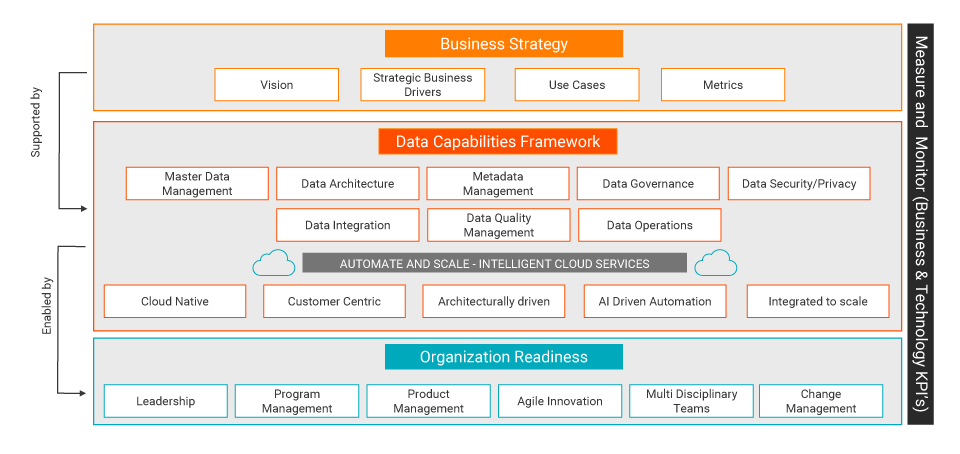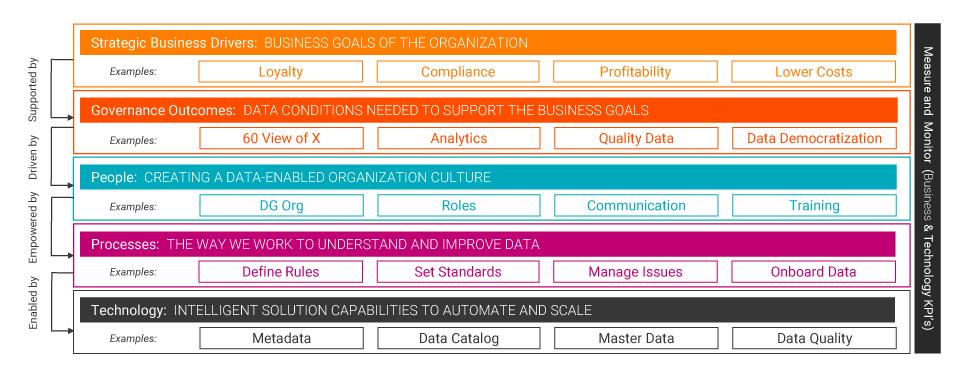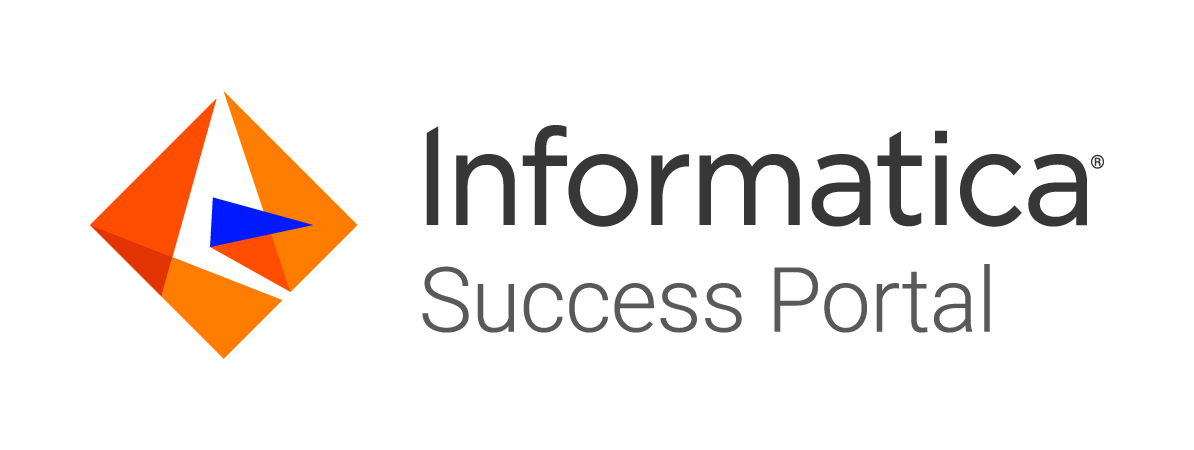-
Success
Manage your Success Plans and Engagements, gain key insights into your implementation journey, and collaborate with your CSMsSuccessAccelerate your Purchase to Value engaging with Informatica Architects for Customer SuccessAll your Engagements at one place
-
Communities
A collaborative platform to connect and grow with like-minded Informaticans across the globeCommunitiesConnect and collaborate with Informatica experts and championsHave a question? Start a Discussion and get immediate answers you are looking forCustomer-organized groups that meet online and in-person. Join today to network, share ideas, and get tips on how to get the most out of Informatica
-
Knowledge Center
Troubleshooting documents, product guides, how to videos, best practices, and moreKnowledge CenterOne-stop self-service portal for solutions, FAQs, Whitepapers, How Tos, Videos, and moreVideo channel for step-by-step instructions to use our products, best practices, troubleshooting tips, and much moreInformation library of the latest product documentsBest practices and use cases from the Implementation team
-
Learn
Rich resources to help you leverage full capabilities of our productsLearnRole-based training programs for the best ROIGet certified on Informatica products. Free, Foundation, or ProfessionalFree and unlimited modules based on your expertise level and journeySelf-guided, intuitive experience platform for outcome-focused product capabilities and use cases
-
Resources
Library of content to help you leverage the best of Informatica productsResourcesMost popular webinars on product architecture, best practices, and moreProduct Availability Matrix statements of Informatica productsMonthly support newsletterInformatica Support Guide and Statements, Quick Start Guides, and Cloud Product Description ScheduleEnd of Life statements of Informatica products
- Velocity
- Strategy
-
Solutions
-
Stages
Following a rigorous methodology is key to delivering customer satisfaction and expanding analytics use cases across the business.

-
More
-
Success
Manage your Success Plans and Engagements, gain key insights into your implementation journey, and collaborate with your CSMsAccelerate your Purchase to Value engaging with Informatica Architects for Customer SuccessAll your Engagements at one place
-
Communities
A collaborative platform to connect and grow with like-minded Informaticans across the globeConnect and collaborate with Informatica experts and championsHave a question? Start a Discussion and get immediate answers you are looking forCustomer-organized groups that meet online and in-person. Join today to network, share ideas, and get tips on how to get the most out of Informatica
-
Knowledge Center
Troubleshooting documents, product guides, how to videos, best practices, and moreOne-stop self-service portal for solutions, FAQs, Whitepapers, How Tos, Videos, and moreVideo channel for step-by-step instructions to use our products, best practices, troubleshooting tips, and much moreInformation library of the latest product documentsBest practices and use cases from the Implementation team
-
Learn
Rich resources to help you leverage full capabilities of our productsRole-based training programs for the best ROIGet certified on Informatica products. Free, Foundation, or ProfessionalFree and unlimited modules based on your expertise level and journeySelf-guided, intuitive experience platform for outcome-focused product capabilities and use cases
-
Resources
Library of content to help you leverage the best of Informatica productsMost popular webinars on product architecture, best practices, and moreProduct Availability Matrix statements of Informatica productsMonthly support newsletterInformatica Support Guide and Statements, Quick Start Guides, and Cloud Product Description ScheduleEnd of Life statements of Informatica products
-
Success
Data Intelligence is the Future of Data Governance
Data-driven decisions and insights -- this is what businesses have aspired to for 10 years. Digital transformation initiatives are propelling enterprises forward. This necessitates a digitally aligned workforce that needs to be equipped with the right data to transform business processes, keep the business differentiated and create value for its stakeholders. At the same time, organizations are seeing greater adoption of cloud and automation, and as a result, they are looking to Artificial Intelligence (AI) to help them modernize their processes, remain relevant, and stay competitive.
According to a recent Harvard Business Review article, fewer individuals—a mere 24 percent to be exact—would rate their organizations as being data-driven. Executives report that cultural challenges – not technology challenges – represent the biggest impediment to successful adoption of data initiatives and the biggest barrier to realizing business outcomes. Clearly, there is opportunity for growth and improvement. After all, becoming a data-driven organization represents a transformational process.
Data Governance is the Key to Being Data Driven
Despite sustained investments, the key reason enterprises have struggled to reap the benefits of this transformation is the inadequate focus given to their key asset -- data. Data stakeholders need access to trusted data for varied use cases such as enhanced customer experience or providing a new service. The key to success for these initiatives that rely on trusted data is to have the required governance capability that improves operational efficiency, assures data quality, and provides trusted access to empower business leaders in their decision-making.
The Evolution of Data Governance: From Compliance to Data Intelligence
You may wonder how data governance can solve this challenge. Many people associate data governance with its roots in regulatory compliance. Traditionally, governance has emphasized a deep understanding of a narrow set of data assets and tight access controls before sharing that data. Data intelligence starts from the opposite point of view—sharing the data.
What is ‘data intelligence, you ask? Per Stewart Bond at IDC, “Data intelligence leverages business, technical, relational, and operational metadata to provide transparency of data profiles, classification, quality, location, lineage, and context; Enabling people, processes and technology with trustworthy and reliable data.”
By definition, data intelligence starts from a broader spectrum of data—often “all” available data in the enterprise, or at least what is in the data lake, cloud data warehouse, and enterprise systems—that could be useful to any analyst, data scientist or decision-maker. Data intelligence refers to the practice of using artificial intelligence and machine learning tools to analyze and transform massive datasets into intelligent data insights. However, data intelligence is still grounded in the key principles of governance. That is, who can use the data and for what purpose? Really, data intelligence is the logical evolution of governance as data becomes democratized and shared freely—and safely—across the enterprise and beyond.
Simply put, data intelligence helps you to find your data, understand it, trust it, and access it. Context is intelligence. It’s understanding the context in which data is being used.
The Future of Data Governance: 2022 and Beyond
Transforming data governance programs for teams who can deliver intelligence about your data in 2022 and beyond is your organization’s challenge. But it’s a challenge worth embarking upon and Informatica is here to help. Not just as a technology that supports your mission, but also as trusted advisors who can help connect you with a collective community of experts to assist you on your journey. Visit our Services Catalog for additional information.
Leading organizations are taking data intelligence one step further by adopting cloud-hosted data governance solutions to realize meaningful advantages. A few of those advantages are listed below. This technology will help enable your organization bring together capabilities across cataloging, lineage, stewardship, quality, AI model governance, and more to help you find, understand, trust, and access your data at a low cost.
Key Benefits:
- Consumption-centric bias vs. provision-centric. Self-service consumption of trusted data requires data governance programs to be right-sized to applications and immediate organizational needs, accelerating time to value for results by minimizing provisioning that delays new value-creation initiatives. You need to spend less time spinning up infrastructure with new OpEx and CapEx, and more time generating data intelligence.
- Fully integrated and unified solutions. While on-premises data governance solutions can be offered as a platform with any number of components, by combining capabilities within a cloud-hosted solution with transparency to user experience, the line can be blurred between users and discrete applications to instead focus on end-to-end use cases that produce data intelligence for results, utilizing global data sets. Data governance can be abstracted to be more agile, flexible, and available to all who need reliable data to consume.
- Metadata-driven approach to data intelligence and automation. Similar to the previous point, data intelligence is more aligned to process manufacturing than to discrete outcomes, as data governance is a process that continually refines the “oil of data” into the “gasoline of data intelligence” that fuels the organization. A cloud-hosted solution underpinned by metadata management can better automate and accelerate results from data analytics applied at scale, increasing efficiency and achieving data insights faster and continuously.
Developing Your Data Intelligence Strategy
Implementing data intelligence within an organization begins with a blend of strategy and governance. Leveraging both the Informatica Data Strategy and Data Governance Frameworks as contextual models will ensure data intelligence is part of the organization’s digital transformation plan.
Cloud First Cloud Native: Data Strategy Framework

The Informatica Data Governance Framework

These frameworks provide a pragmatic approach to defining data strategy and data governance enablers within an organization to support data intelligence. Within data strategy development, mapping the data capabilities to business results will drive the success of the organization. Let the business take the reins in describing their desired business outcomes. However, this is a significant change to the traditional lines of thinking. Mapping the change management considerations to people, process and technology will highlight the infrastructure that needs to be in place to succeed as an organization.
Utilizing the frameworks as guideposts, the shift from today’s “gas” to tomorrow’s “fuel can be distilled into six (relatively) simple steps:
Step 1: Document and Collaborate
The first step in democratizing data is to begin by establishing a foundation for data governance and documenting it. With that done, you then need to nurture a collaborative data culture that will build on that documented foundation. That’s because even the most carefully thought-out governance plan won’t work without the right collaborative culture.
Step 2: Discover and Curate
Once you have your governance framework in place and documented, and a data-friendly, collaborative organizational culture that encourages users to follow it, it’s time to find the data.
Step 3: Cleanse and Master
Now that you have acquired knowledge about your data, it’s time to ensure you can trust the data.
Step 4: Protect and Monitor
Gaining momentum on acquiring, understanding, and ensuring the quality of the data, it’s time to ensure the users legitimately have access and the proper rights to use the data. The importance of this cannot be emphasized enough due to privacy and regulatory requirements, especially when migrating from provisioned to self-service consumption.
Step 5: Data Consumption
We’ve talked about knowing your data (definition, discover) and trustworthiness (quality, privacy). Now we’ll focus on usability. Steps 5 and 6 are about packaging up the data and getting it to the right place, the right people, in the right form so that it can be found and analyzed or used quickly and efficiently.
Step 6: Deliver Value
Now it’s time to utilize the data to propel the organization forward.
So, how is this really and different than today – the differentiator is the sheer volume of data coupled and the need for speed and agility.
Fuel Your Business with Data Intelligence
Digital transformation changes expectations: better service, faster delivery, with less cost. Businesses must transform to stay relevant, and data holds the answers.
Every decision made by your organization should be built on a foundation of trusted data and insights. Ensuring that your entire organization from across the world can access the information that they need is paramount. With business intelligence your organization will be able to find, understand, govern, and trust the data they need, as well as the AI models fueled by the data. For more information, visit our website to discover additional resources and connect directly with our team.
